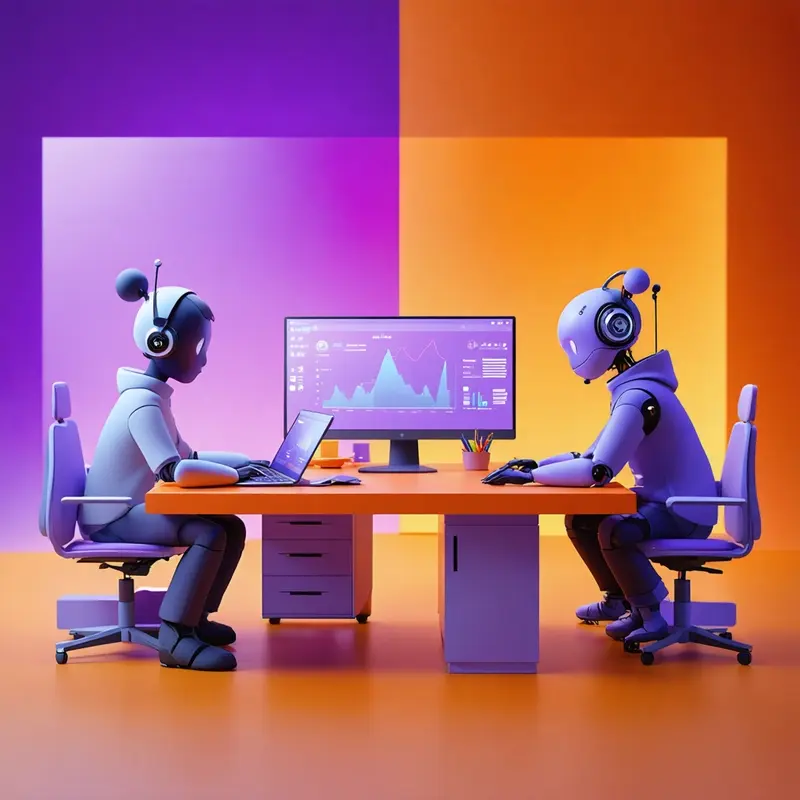
OpenAI GPT-5 Public Preview: Revolutionizing Code Generation
Imagine writing code with an AI partner that not only anticipates your next move but fixes bugs before you spot them. With the public preview launch of OpenAI GPT-5, this vision is rapidly becoming a reality for developers, enterprises, and everyday users across the Microsoft and GitHub ecosystem.
GPT-5 Launch: A New Era for AI and Code Generation
The Immediate Impact on Developers
Just 48 hours after launch, GPT-5 is already making waves in the software development world. Integrated deeply into GitHub Copilot, the new model takes AI-assisted coding to unprecedented heights. Developers are finding that GPT-5 can manage multi-file projects, generate robust unit tests, and proactively debug code with less need for explicit instruction. Early enterprise trials show a 40% reduction in median developer time-to-solution, highlighting the tangible productivity gains delivered by this upgrade.
Broader Implications for Everyday Users
While developers reap immediate benefits, the ripple effects extend far beyond. Microsoft Copilot, now available for free with GPT-5’s “Smart mode,” brings advanced AI to tasks like information search, document reasoning, and creative writing. This democratization of powerful AI tools means sophisticated assistance is accessible to anyone, regardless of technical background.
Inside the Tech: What Sets GPT-5 Apart
Architectural Advances from GPT-4 to GPT-5
The leap from GPT-4 to GPT-5 isn’t just incremental—it’s transformative. GPT-5 is trained on Microsoft Azure’s vast infrastructure, benefiting from accelerated pretraining and fine-tuning capabilities. The model’s context window has expanded, enabling it to handle more complex, end-to-end coding tasks and maintain continuity across conversations. Its enhanced reasoning allows for richer understanding and more precise output, reducing the need for repetitive prompting and clarifications.
Agentic AI and Smarter Collaboration
GPT-5 introduces “agentic” capabilities, shifting the AI from a passive code generator to an active collaborator. It not only suggests code but also reasons through requirements, proposes solutions, iterates on feedback, and proactively identifies issues. Think of GPT-5 as a seasoned coworker, always ready to jump in—not just following orders but anticipating the next step and driving projects forward.
How GPT-5 Transforms Development and Productivity
Real-World Use Cases in GitHub Copilot
One developer recounts, “Last week, I migrated our codebase to GPT-5 in Copilot. Not only did it generate boilerplate faster, but it flagged a logic error our tests missed—a real game-changer.” Such stories are becoming common as GPT-5’s ability to handle multi-file projects and generate end-to-end solutions comes to the fore. With agentic AI, code reviews are faster, onboarding new developers is easier, and the margin for human error narrows significantly.
Enhanced Productivity in Microsoft 365
For enterprises, GPT-5 powers Microsoft 365 Copilot with advanced document reasoning and workflow automation. Organizations can now automate routine analysis, synthesize business insights, and interact with vast datasets with unprecedented ease. Imagine a digital assistant that can draft reports, summarize lengthy chains of emails, and even suggest data-driven strategies—GPT-5 is making this a reality for businesses worldwide.
Navigating Risks: Ethical and Practical Challenges
Security, Reliability, and Oversight
With great power comes great responsibility. As GPT-5 takes on a more autonomous role in software development and business decision-making, issues of security and oversight move to the forefront. Experts caution that human review remains critical to prevent the spread of subtle bugs, insecure code, or unintended behavior. While GPT-5 excels at reasoning and explanation, its decisions aren’t infallible—transparency and auditability are essential, especially in regulated industries.
Societal Considerations and Job Impacts
The automation of higher-order tasks by GPT-5 fuels ongoing debates about job displacement and the future of work. As AI handles more cognitive and creative activities, professionals may need to reskill and adapt to new roles. At the same time, the democratization of advanced AI tools opens doors for innovation and creativity, potentially leveling the playing field for smaller teams and individual creators.
What’s Next for AI in the Microsoft Ecosystem?
The Future of Autonomous Agents
GPT-5 sets the stage for a new generation of autonomous AI agents capable of managing projects from requirements gathering to deployment. These agents can act as copilots in every sense—supporting, guiding, and occasionally taking the lead. The coming months will likely see the expanded use of these technologies across industries, from software engineering to healthcare and beyond.
Opportunities for Developers and Enterprises
With GPT-5’s deep integration into GitHub Copilot, Microsoft 365, and Copilot Studio, the opportunities for innovation are vast. Developers now have a partner that can amplify their skills, while organizations unlock new efficiencies and insights. Yet, the journey is just beginning—responsible deployment, continuous oversight, and thoughtful adaptation will determine how society harnesses the potential of GPT-5 and its successors.
In summary, the public preview of OpenAI GPT-5 marks a watershed moment for AI-powered code generation and productivity. Its immediate impact is visible in the tools millions use daily, but the true test will be how industry and society adapt to this new era of intelligent, collaborative software.